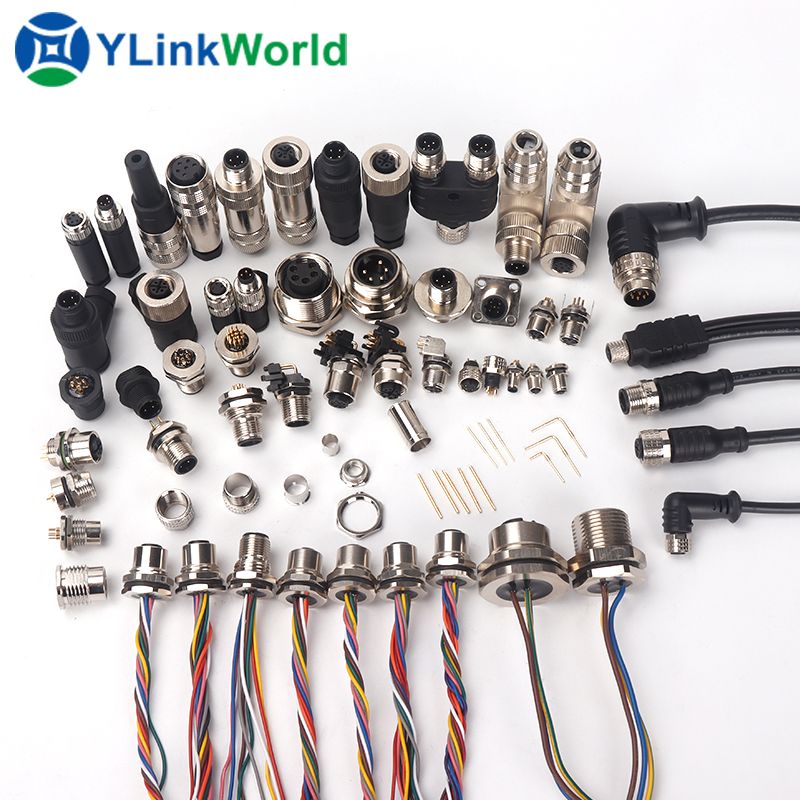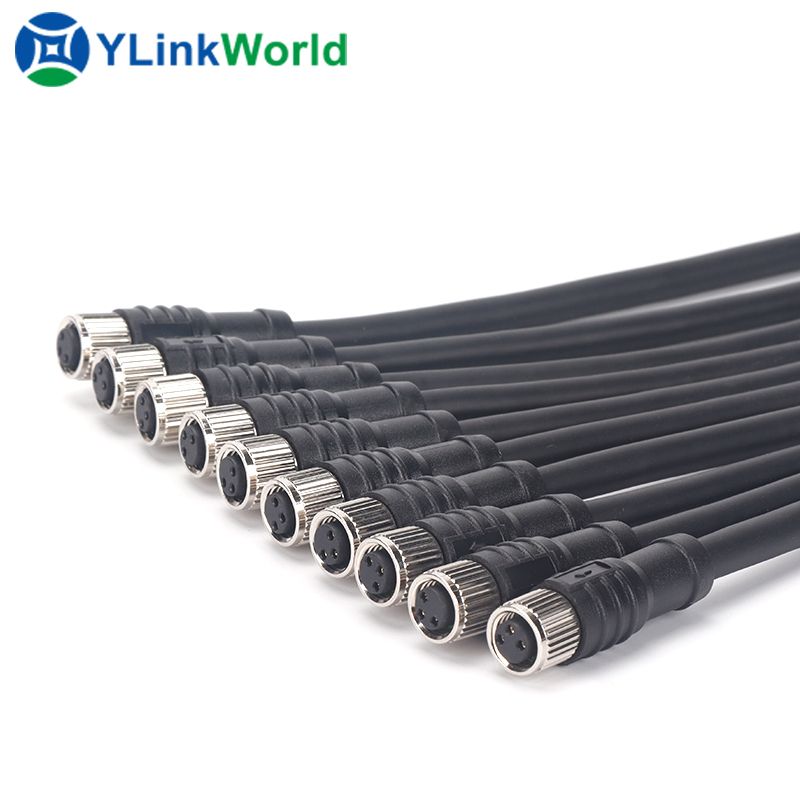As we all know, M series circular waterproof connectors mainly include: M5 connector, M8 connector, M9 connector, M10 connector, M12 connector, M16 connector, M23 connector, etc., and these connectors have roughly 3 different assembly methods according to different application scenarios, generally including:

Assembly type: mainly installed on site, the assembly method is usually locking screws, some cores are also welded, users can install themselves according to their own needs, suitable for a small number and varies line length specifications application scenarios; Flexible installation and disassembly;
Panel mount: The panel mount is usually suitable for the crate and the inside of the product, after installation, it is fixed with nuts, usually not often removed and moved, also called the socket or the board end; Mainly used in combination with assembly type or molded type;
Overmold type: molded type is also called injection encapsulation, after welding with the mold injection molding, usually suitable for large quantity and specifications are more consistent, customers can be directly used, without the need for self-installation like assembly type, waterproof effect will be better.
Today, we will focus on the production process of M12 overmold connector type products:

1. Wire cutting: check whether the specifications and models of the wires are correct; Whether the size meets the requirements; The incision must be flush, do not scratch the wire, the wire is not dirty and so on.
2. Peeling the outer skin: check whether the peeling mouth is flat, do not peel the core wire, marshalling silk, etc., and whether the peeling size is correct.
3. Grouping treatment: check the trimming size is correct or not, whether the trimming is flush, and do not hurt the core wire when trimming the grouping.
4. Peeling the endothelium: check whether the peeling mouth is level; Whether the peeling size is correct; There is no damage to the core wire, broken copper wire; Insulators must not fall off during half-stripping.
5. Sleeve shrink tube: Check whether the size and model of the shrink tube are correct.
6. Prepare the solder: check whether the temperature of the tin furnace is correct; Whether the core copper wire is sorted out before preparing the solder, whether there are forks, bending, discounting and other phenomena; After preparing the solder, whether the copper wire bifurcation, big head, uneven copper wire and burned insulation skin and other phenomena.
7. Soldering: Check whether the temperature of the electric soldering iron is correct; Do not burn the insulation, the tin point should be smooth, Wuxi tip, do not fake welding, virtual welding.
8. Terminal pressing: Confirm the specifications of terminals and wires are correct; Whether the terminal is pressed with a horn, tilted, and the insulation skin and core wire are too long or too short.
9. Terminal insertion: Check whether the connector and terminal model are correct. Whether the terminal damage, deformation and other phenomena; Terminal leakage, misinsertion, insertion is not in place and other phenomena.
10. Wire crimping: check whether the connector model is correct; Whether the direction of the wiring is correct; Whether the core wire is damaged, exposed to copper, or scalded; Whether the crimp is in place.
11. Blow the contraction tube: Whether the contraction tube is good, do not burn the insulation skin.
12. Assembly shell: whether the shell is installed incorrectly, whether there are scratches, rough edges and other bad, whether there are missing parts, whether the screws are screwed, oxidation, discoloration, loosening and other bad, no bad anastomosis after assembly; If the shell is oriented, it must be assembled in accordance with the requirements.
13. Label: Check whether the content of the label is correct, clear, and without hyphenation; The size of the label is correct; Whether the label is dirty or damaged; The position of the label is correct. 14. Tie the cable tie: check whether the specifications, colors and positions of the cable tie are correct; No fracture, loosening phenomenon.
15. Injection molding: Check whether there is dirt on the mold, whether there is a lack of material, bubbles, poor bonding, poor hardening and so on.
16 Plug molding: Check whether the plug molding is damaged, uneven, lack of material, raw edge, debris, flow and other bad, confirm that the metal terminal is not deformed, damaged, exposed copper and other bad.
17. Electrical inspection: Check according to the requirements of the inspection guide ticket of the corresponding product.
18. Appearance check: Note that all items should be checked as long as they are visible. For example: check whether the product size meets the requirements; Whether the wrong materials are used, whether there is more or less use; Check the surface of wires and connectors for scratches, stains, rough edges, deformation, gaps and other defects; Whether the connector fasteners are missing, and whether the shell assembly is good; Whether the contents of the label are correct and clear; The position and direction of the label are correct. Whether the terminal is pressed in good condition, whether there is leakage, misinsertion, and whether the insertion is in place; Whether the cable crimping condition is good; Whether the shrinkage of the heat shrink tube is good, whether the shrinkage position and size are correct; Whether the specifications, quantity and position of the cable ties are correct or not.
Post time: Jan-06-2024
